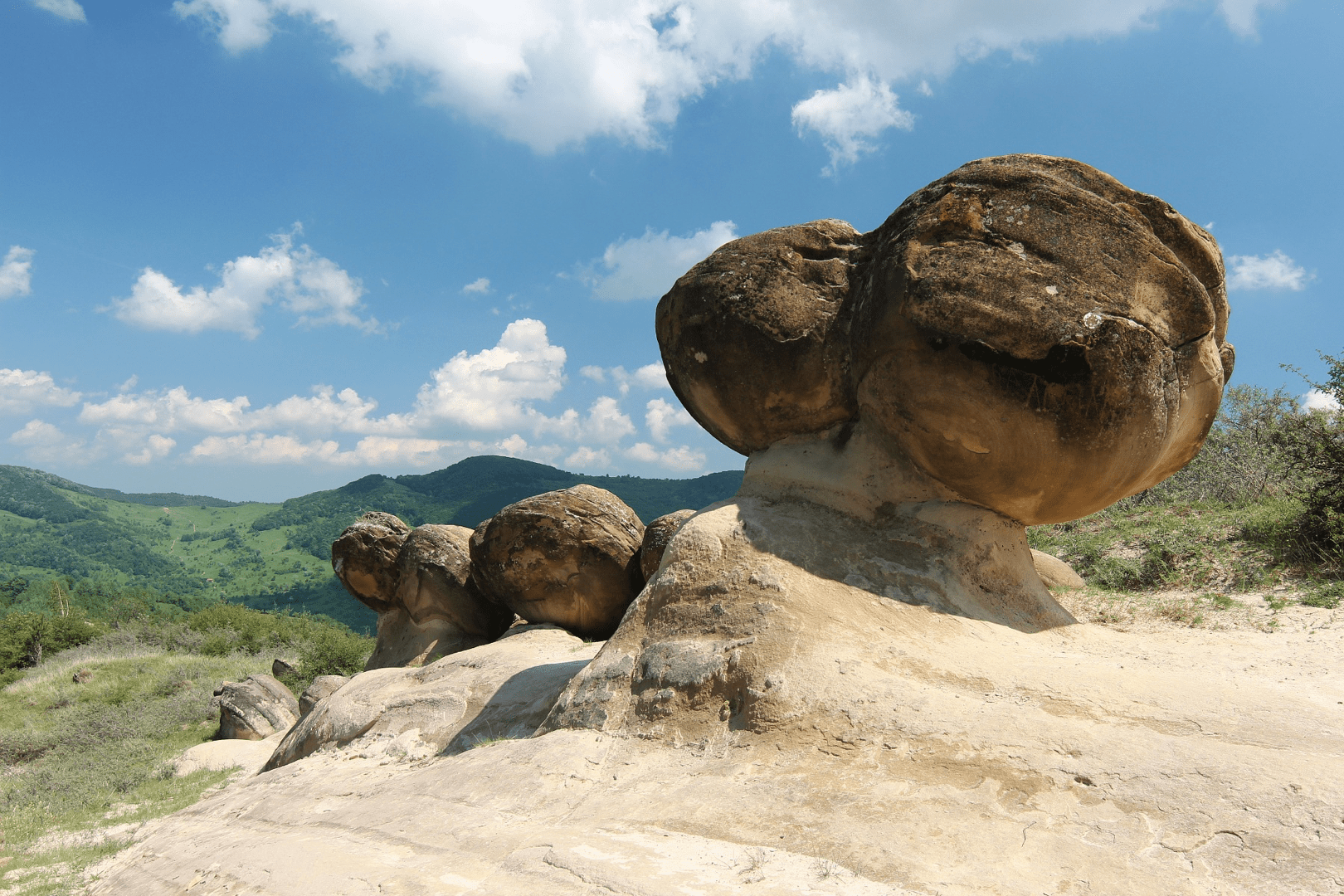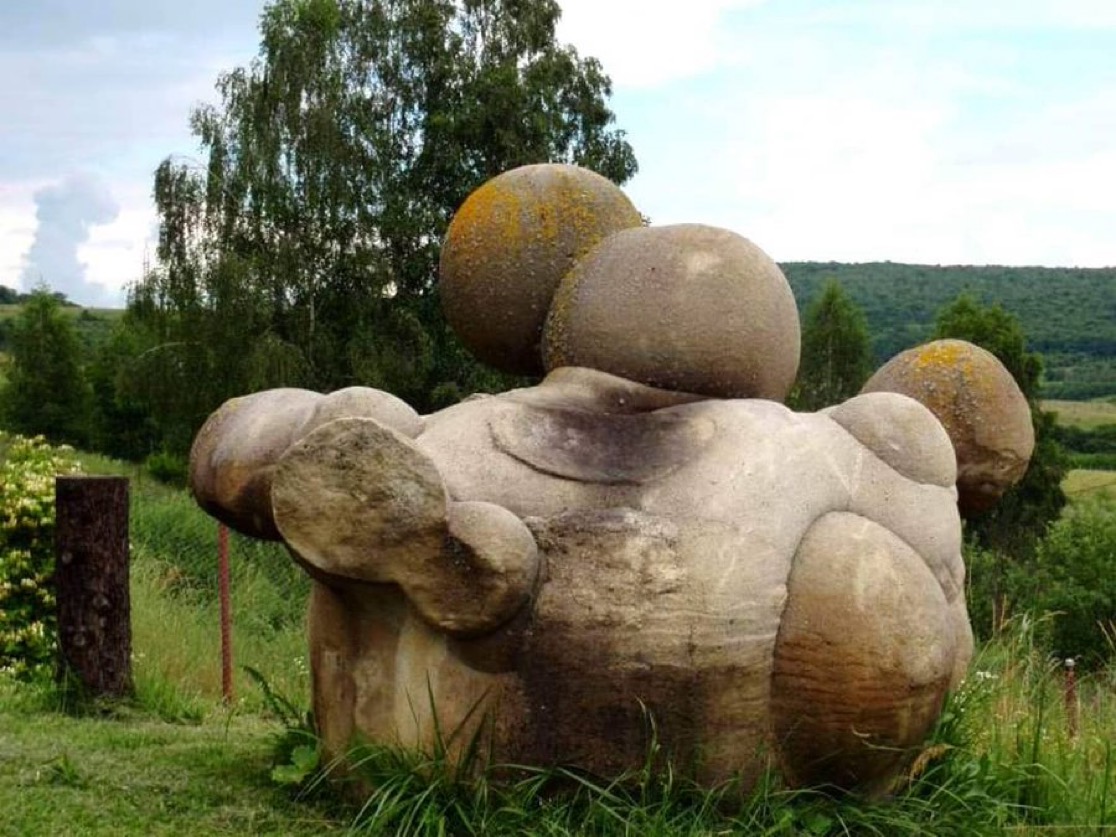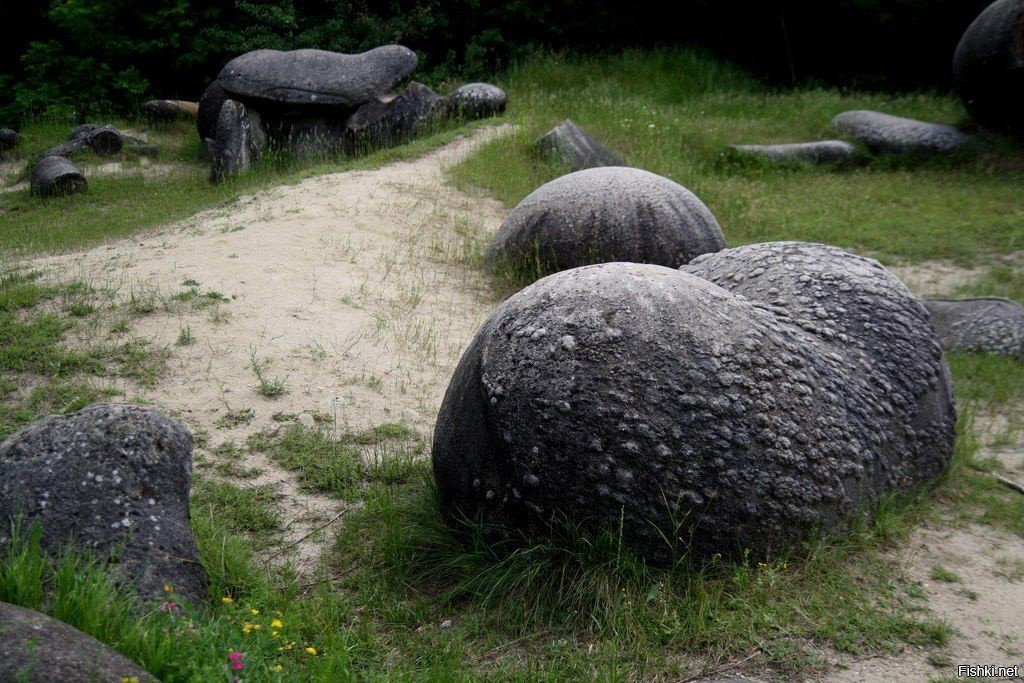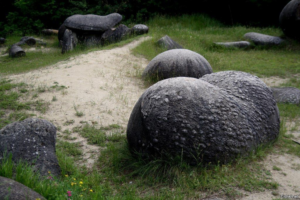Romania, a country known for its beautiful landscapes and rich history, is also home to a rare and enigmatic geological phenomenon – the Trovants. These so-called “living stones” have fascinated locals and scientists alike for centuries. With their ability to grow and move, the trovants have become a source of legends and myths in the region.

But what exactly are these mysterious rocks and how do they possess such unusual characteristics?
The legend of the Trovants

In Romania, the most famous location for Trovants is in Costesti, a small village located in Valcea County. The local villagers consider the Trovants to be alive, having witnessed them grow and move over generations. According to their beliefs, the rocks are the product of supernatural forces or even the work of extraterrestrial beings.
Geological Explanation
For geologists, Trovants have long been a captivating mystery. But through years of research and study, they have been able to uncover the truth behind these strange geological formations.
The formation of Trovants
Roughly six million years ago, paleo-earthquakes created a type of geological phenomenon called Trovants. They are also known as “cemented sandstones” or “concretions.” Trovants are made up of a hard stone center surrounded by sandstone and vary in size from small pebbles to massive boulders weighing several tons.
Trovants are formed under highly complex circumstances involving seismic shifts, sand sediment in rivers and rain, and lots of time. The process begins when sand accrues around a hard stone core and is cemented by water with a high concentration of calcium carbonate. This mixture melds together to make these truly fascinating rocks known by locals as the “growing stones.”
The growth of Trovants
What makes Trovants even more exciting is their ability to grow. When there is unusually heavy rainfall, trovants tend to absorb minerals in the rain. This, along with the formation of the sand and sandstone deposits already present, causes a chemical reaction that exerts immense pressure on the inside of the trovant. As a result, the rock expands outwards from its core towards its outer crust, making it grow on the surface.
Over time, small deposits are pushed outwards, adding to the rock’s size and giving it a bumpy appearance. This is how they got their name – “growing stones.” However, the rate of growth is relatively slow, with only a few centimeters added every thousand years. But over millions of years, these rocks have grown into unique and fascinating formations.
The movement of Trovants

Aside from their growth, Trovants also have the ability to move – albeit extremely slowly. This movement is a result of their growth process. As they absorb minerals and expand, they effectively change the landscape around them, creating a path for themselves to move small distances over significant periods.
Scientists have also discovered that Trovants move due to external factors such as heavy rains or seismic activity. Although their movement is almost imperceptible to humans, it has been observed through geological studies and evidence of displaced objects found near Trovant formations.
Elliptical layers inside Trovants
Over the years, geologists have cut open numerous Trovants to study their composition and formation process. They have found that not unlike tree rings, these geological formations also have multiple ringed elliptical layers inside.
This is because the rocks effectively grow through bubbling outwards when rained on. Under those conditions, they pick up further deposits of sand from their surroundings and continue to grow slowly over years. This explains the layers that geologists have noticed within the Trovants they have cut open.
Tourist attraction
The Trovants, fascinating ‘living rocks’ that seem to grow, have made the site a popular tourist attraction in Romania. To protect these unusual geological creations, the local body developed the “Muzeul Trovantilor” or Trovants Museum Natural Reserve in Valcea County in 2004. The museum is now protected by UNESCO.
Final thoughts
Although they may appear to be alive, Trovants are not technically living beings. They are simply a unique and fascinating type of rock formation that have been around for millions of years. But it is not surprising that they have become the stuff of myths and legends. After all, trovants are the closest thing to living rocks, and they have been around much longer than any human on the planet, making them a part of ancient history.
In conclusion, Romania’s Trovants may seem like something out of a sci-fi movie, but their existence is a testament to the wonders and mysteries of our natural world. So if you ever find yourself in Costesti or any other region in Romania where these living rocks can be found, take a moment to marvel at their unique beauty and ponder on the mysteries that lie within them.

